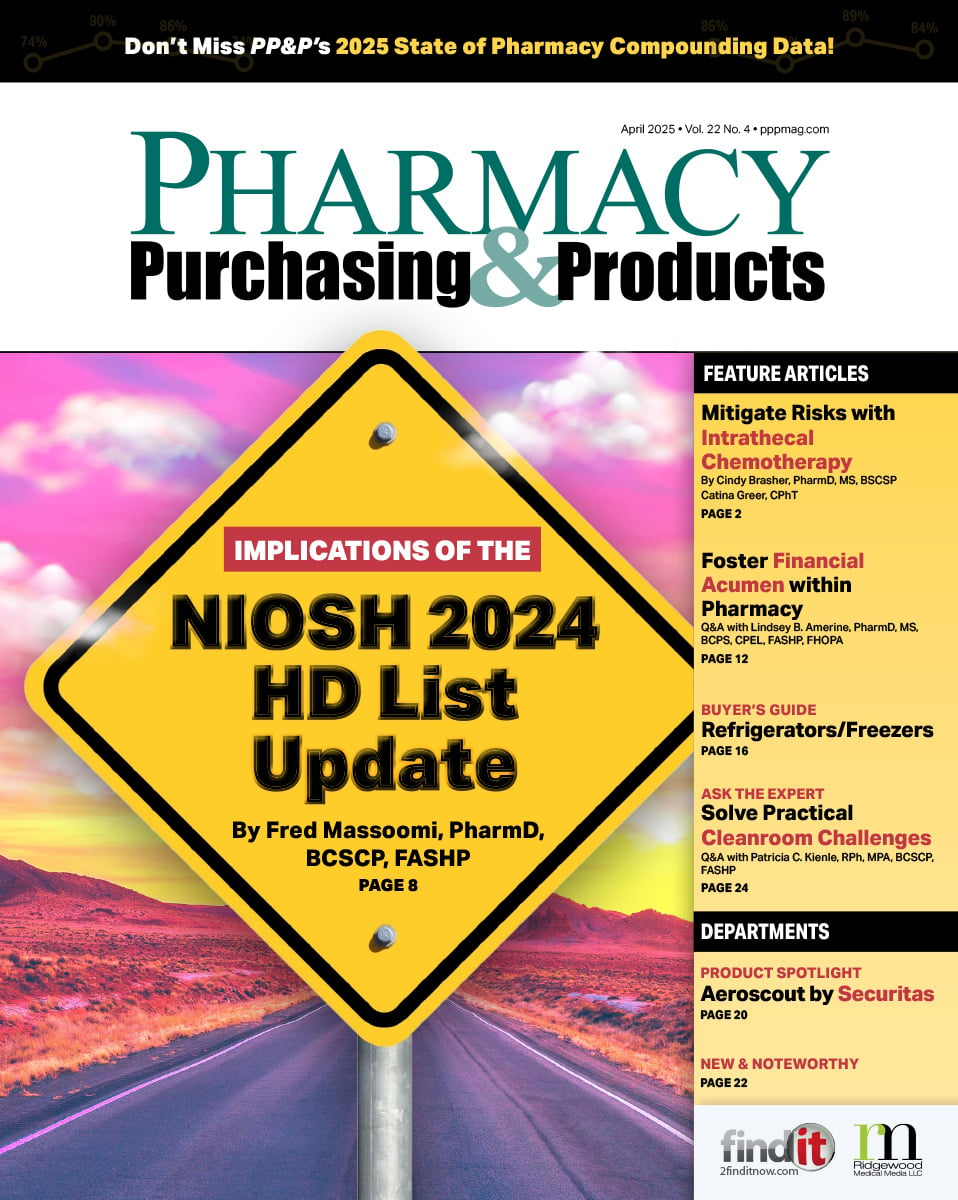- Show Menu
- Contact Us
- FAQs
- Reader Service
- Survey Data
- Survey Winners
- Testimonials
- Upcoming Events
- Webinars
- White Papers
Product Spotlight: XT Anesthesia Workstation from Omnicell
Billing data is at the heart of the split billing software systems used to guide 340B-compliant purchasing. Erie County Medical Center Corporation (ECMC), a nonprofit health system and 340B covered entity in Buffalo, New York, found that with 12 active operating rooms (ORs), the anesthesiology team was having difficulty capturing charges in the surgical setting. ECMC pharmacy leaders were challenged in ensuring complete charge capture in the OR, which impaired our ability to optimize 340B program cost savings and could put our program compliance at risk.
Serving western New York state as a Level 1 Adult Trauma Center accredited by the American College of Surgeons, ECMC experiences high volume in its ORs. A 340B institution, the hospital is very mindful of compliance in a busy, fast-paced environment. A solution was needed to ensure effective charge capture in the OR to optimize cost savings while maintaining program compliance.
Establishing a Solution
The anesthesiology team at ECMC approached the pharmacy staff about implementing the Omnicell XT Anesthesia Workstation into the facility’s ORs in 2007 to improve the securing and tracking of medications. The specialized dispensing system delivers medication access that the anesthesiologists value while providing the pharmacy team with security over controlled substances in the OR. In addition to improving oversight and inventory management for medications, the technology also facilitates accurate charge capture.
The anesthesiologists felt strongly that they would benefit from the addition of an anesthesia workstation, further citing that as a teaching hospital, residents should learn the technology. Gaining administration approval was not difficult, as many hospital stakeholders were pleased with how quickly the pharmacy and anesthesiology teams were able to establish this technology, which, including contracting and implementation, took approximately 6 months. Following the success of the first implementation, five additional anesthesia workstations were added.
Compliance Is Key
Because dispensed drugs are rolled into a procedural charge in a surgical setting, if a provider forgets to document a drug, it becomes challenging to track the missing charges and calculate the actual cost per case, while still remaining compliant.
Prior to implementation, ECMC’s anesthesiology team was capturing charges on paper with roughly 10%-15% accuracy. After implementation, ECMC evaluated a surrogate drug used almost exclusively in the surgical setting. Charge capture improved from 20-30 doses per quarter to more than 3000 per quarter. Repeat re-evaluations confirmed that the rates of capture have been sustained over time.
Now that the anesthesiology team has been trained to utilize the scanning features on the workstations, the machine performs the bulk of the busywork involved in charge capture. As a result, anesthesiologists no longer have difficulty balancing their clinical responsibilities against accounting for dose capture. In addition, the bar code technology increases efficient and accurate patient identification, which further promotes compliant charge capture. Routine auditing through the workstations helps ECMC confirm compliance.

Medication Safety
Ten years after the implementation, these secure cabinets have now been adopted throughout all of the ORs at ECMC’s main hospital and ambulatory surgery center. While ECMC continues to focus on maintaining 340B compliance, we have also been able to leverage the cabinets’ technology features to impact medication safety throughout the facility.
Labeling. With the addition of an integrated syringe label printer on all anesthesia cabinets, we can ensure standard, complete, and accurate information is displayed on the system and on each syringe label. As a result of the increased accuracy of patient identification and syringe administration, we have experienced increased patient safety in the OR.
Analytics for Controlled Substances. As the opioid epidemic exerts an increasingly strong grip on the American population, it is important to remember hospitals play a key role in this issue. The OR presents unique challenges to controlled substance security and accountability. The advanced analytics features available through Omnicell Analytics augment physical control strategies and enable the pharmacy to analyze patterns of controlled substances removal and audit any controlled substances administered from the cabinet. The Analytics program allows the hospital to more efficiently meet and even exceed the ever-evolving standards associated with diversion prevention and detection.
Looking Ahead
In the near future, ECMC aims to expand the use of anesthesia workstations throughout the procedural settings within the health system—ideally, wherever anesthesiologists are involved. Both the pharmacy and anesthesiology teams agree on the importance of consistency in providing anesthesia care regardless of the location.
Likewise, ECMC looks forward to expanding the use of integrated syringe label printers as well as the enhanced drug diversion analytics specific to anesthesia, with the goal of creating a fully compliant and accountable system for medication management.
Randy Gerwitz, RPh, has served as the director of pharmacy at Erie County Medical Center since 2005. A graduate of the State University of New York at Buffalo School of Pharmacy, Randy is dedicated to providing the patients of Western New York with the highest level of care.
Like what you've read? Please log in or create a free account to enjoy more of what www.pppmag.com has to offer.








